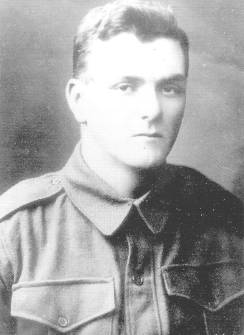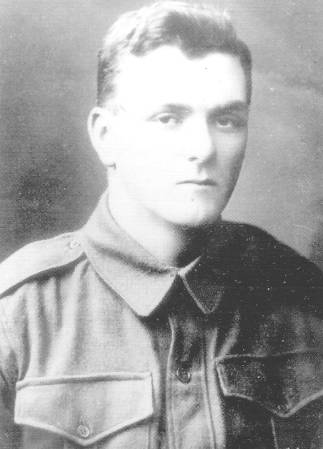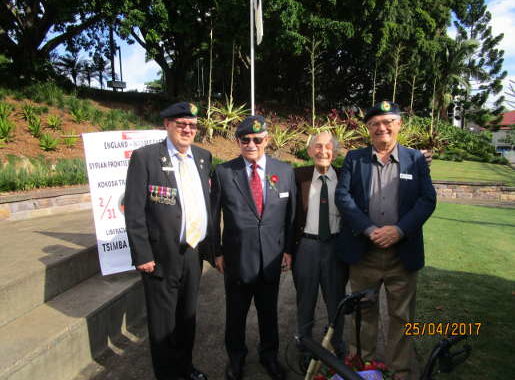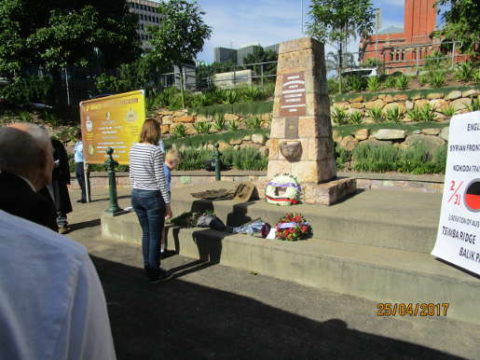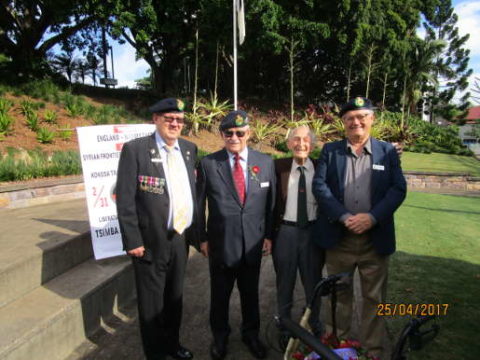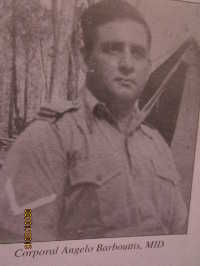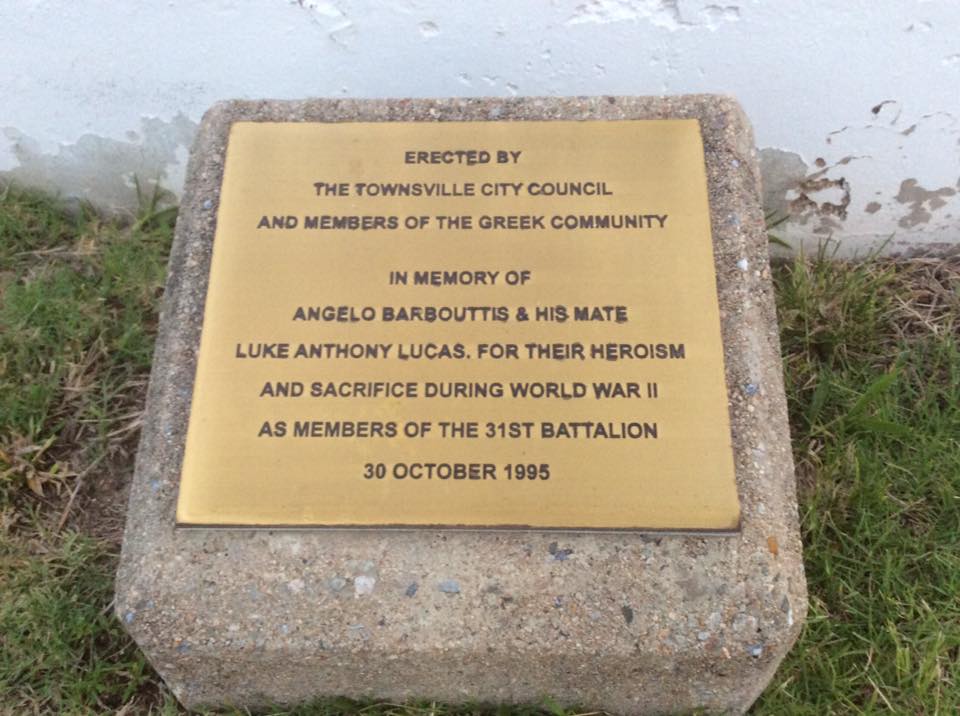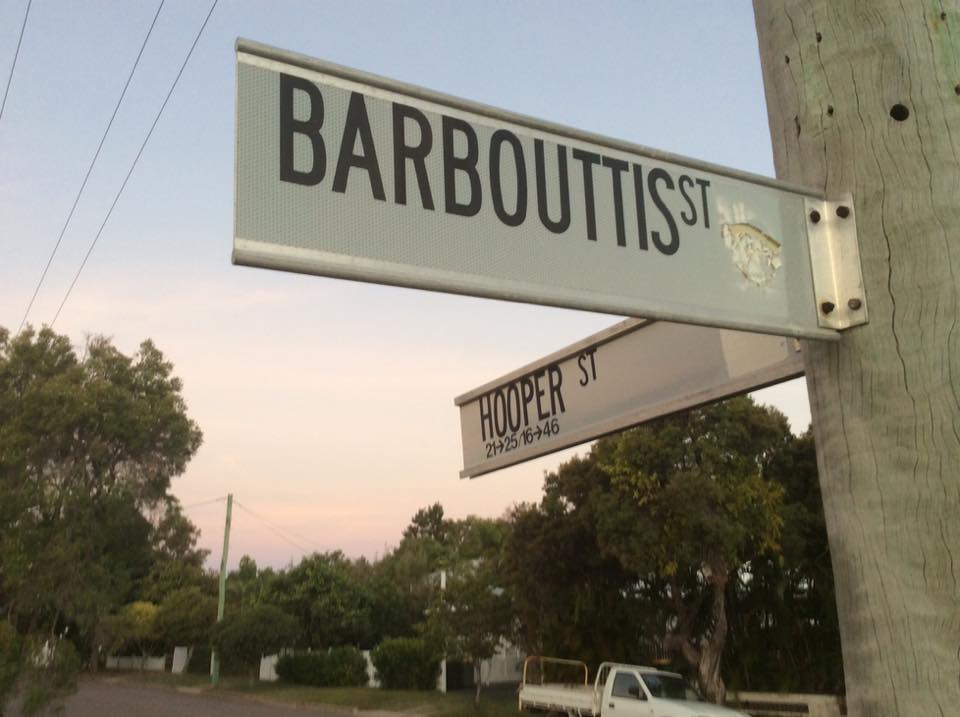The following is an address that was delivered by LTCOL Patrick Nunan (Retd) at the AGM of the 31 Bn Association on 7/03/18. He previously delivered an address to commemorate the 100th anniversary of the Battle of Polygon Wood in September 1917. The commemoration was held at Alstonville NSW near, what was, the Bugden family home. LTCOL Nunan is a decendant of Pte Paddy Bugden’s family and an associate member of the 31st Battalion Association.
PADDY BUGDEN ADDRESS 31 BN ASSOCIATION AGM 07.03.18
President of 31 st Battalion Association, Ray Fogg, secretary Tony Wadeson
members of 31st Battalion Association and distinguished guests.
Firstly, and fore mostly let me pass on to the of 31st Battalion Association the
great appreciation and respect that our family being the Bugden, Kelly and
Connolly families have for your association. At every notable anniversary and
event relating to the deeds and death of Paddy Bugden, the association has
always been represented to pass on its respect and condolences and to honor
Paddy’s deeds undertaken 100 years ago.
The eldest of four children Patrick Joseph Bugden was born at Gundurimba
(south of Lismore) on 17th March, 1897 – a son of a well-known pioneering
family whose origins date back to the very foundations of Australia. At the age
of 6 his father, Thomas Joseph Bugden died. His mother Annie (nee Connolly of
Grafton) later re-married and became Mrs. Annie Kelly. She and her husband
James (Jim) had a further 4 children.
From the family dairy farm at Tatham, Patrick (Paddy) attended the Tatham
Convent School and later from the Farmers Home Hotel at Gundurimba, he
attended the Gundurimba Public School. From Gundurimba the family moved to
the Billinudgel Hotel from where Paddy worked at the Mullumbimby Post Office.
He played cricket and rugby league for Billinudgel. (±1911-1914).
By family, newspaper and military accounts he was. tall, had an excellent
physique and was extremely athletic. Outgoing and popular he excelled at all
forms of physical activity.
In 1914 his mother and step-father (with whom Paddy had a close and loving
relationship often referring to him in his letters home as “Dada” and signing off
as “your son”) bought the Federal Hotel in Alstonville. Paddy moved to
Alstonville with them and lived at and worked in this Hotel until his departure to
join the army. He had already completed 12 months reservist training
(Compulsory Service Obligation Scheme) when he decided to join-up.
As family legend tells it, Paddy in early 1916 then 18 without seeking his
parent’s permission, attempted to catch the train from Lismore to Brisbane to
join the army. The station master knew Paddy probably because of his known
sporting abilities and contacted his mother who immediately went to the Lismore
rail station from Alstonville to bring Paddy back home. I imagine some not so
gentile words were exchanged but in the end Paddy’s determination to join-up
won over his mother and he eventually left Lismore by train some weeks later to
join up in Brisbane. In those days the train journey would have been an
adventure in itself for an 18-year-old lad as he had to travel via Casino to
Wallangarra (to change trains), to Warwick Toowoomba and then to Brisbane.
After arriving in Brisbane, he was sworn into the Army at Thompsons Paddock,
(Enoggera) in Brisbane (25th May, 1916). He as did many other young blokes
at the time said his age was 21 years and I month. Following 4 months initial
training in South East Queensland he sailed for England aboard the troop
transporter “M.V. Seang Choon” on 19 September 1916 with a contingent of
reinforcements (152 in total) for the depleted 31st Battalion.
Arriving in Plymouth on 9 December, 1916. his unit spent 6 weeks in further
training on the Salisbury Plain in southern England. Paddy wrote to his mother
on 16 December 1916 what was for him a long letter describing his experiences
in England. In his letter he described his daily routine as follows:
“You often have to go without a wash all day for the water pipes are generally
frozen. They have cut the seven days a week drill out for the doctors told them
that they were killing the men. So we get Sunday off now. I will tell you a day’s
work. Get up 6.30 (dark) breakfast 7 consisting of tea porridge and bread &
dripping. Fall in eight o’clock, practice bomb throwing. Physical exercises,
squad drill. Dinner 1 o’clock soup, meat, potatoes, one-piece bread. Fall in 2
o’clock. Trench digging and go for a route march. Tea 5 o’clock (dark). Tea
some kind of a pudding and bread and dripping. We sleep in five huts 25 in
each and a good coal stove in the middle. So you can guess we have plenty
toast and tea every night.
After we come home from the pictures which are
about half a mile away.”
Unfortunately for Paddy soon after his arrival he contracted mumps and we
placed in isolation for 14 days meaning that his first Christmas overseas was
spent in hospital. During periods of leave before he contracted the mumps, he
(along with thousands of other Australian servicemen) visited the sights of.
London.
The highly regarded 31st Battalion had already spent long periods in front line
positions.
In his letter to his mother dated 16 December 1916 he spoke of his imminent
move to France and joining the 31 st Battalion, He said in his letter:
“They are considered one of the best battalions that ever-left Australia. In their
first great charge they captured four lines of enemy trenches and held them until
relieved. When the roll was called next day only seventy men answered.”
Paddy arrived in France on 18 January 1917 but before he left England he
wrote a letter to his mother that included the following prophetic words:
“We are going into the worst fight of the lot but I am well prepared for it and
have been well prepared ever since I landed in England. Going to my duty
every week and if by chance anything happens to me rest ashored (assured)
that I feel in my heart that I shall gain a place of happiness for I have never did
a deed in my life that I am ashamed of. So I fear nothing”.
The winters in France were ferocious to such an extent that Paddy in a letter to
his mother dated around February 1917 said:
“I am getting accustomed to the severe cold now and think it nothing knocking
about with the glass 30 below. When we want water, we build a fire and melt
the ice”
He went on to say:
“In your next letter you can forward me over some of the N.S.W. sun. I tell you
we can do with it. I think the Fritzys have a mortgage on the one over here.
Give a good time to all the Returned Infantry for they deserve it a thousand
times more than the other units. They are the men.”
Paddy’s first taste of serious action with the 31 st was in the second battle of
Bullecourt between 3 and 17 May 1917. In a letter to his mother written around
the end of May 1917 Paddy records the battle as follows:
“I suppose you read about our stoush at Ballencourt.(Bullecourt). Fritzy got what
is commonly called hell and we got nearly the same. I would not take twenty to
one on his chance now although he will hold out a year yet.”
Paddy’s prowess in sports was documented in other letters to his siblings in the
summer of 1917 from France. He wrote to his sister Rose:
“I had a funny game of football yesterday. Two of the players got wounded and
were carried to hospital. Just as we started one chap happened to kick a bomb
which exploded giving the two I mentioned some nasty wounds. We won the
game. I was a picture by the time we had finished’
Then a few months later he wrote to his brother Barney to say:
“I have a great name amongst the Batt Boys as a footballer.
They call me
the “Tank” and they think there is no one like me as a player.”
Paddy’s letters were mainly seeking information from his family, friends and his
home town of Alstonville. He also assured his mother that he was regularly
attending mass and going to confession. In his letter to his sister Rose dated 23
June 1917 he reports:
“Church tomorrow.
A French Priest says Mass and delivers the sermon.
The sermon sounds good but I don’t know a word of what he says. I suppose
it’s marked down in the big book to my credit just the same”.
It seems as though he rejoiced in the normality of life back home hearing about
normal everyday events particularly what his parents, grandparents and siblings
were doing. For example, he received a letter from home saying that his
youngest sister Nancy (my mother) was sick his immediate response in his
letter to his sister Mon in August 1917 was:
“Just fancy poor little Nance being sick.
I hope to goodness she soon gets
better. I would sooner, oh I don’t know what, than see anything happen to her.”
He goes on to tell Mon:
“I am going strong with a French girl (‘what’s that” you said) we can’t understand
one another.
Only sit down and wink at one another. It all helps to pass
the time. She makes a worse attempt at my name than Nance. I’m dashed if I
know whether I am any nearer the mark with regard to hers. I keep my eye on
the old man and whenever I see him approaching with a pitch fork I turn the
steering wheel for the billet.”
Paddy’s letters are fascinating in the way they avoid anything but a few
sentences of what his war was like. Instead he constantly focused on those
near and dear to him. In April 1917 he writes to his mother asking:
“I would love to see Nance now and hear her sing. It makes me think of home
every time I see a child and I always think of little Billy and Nance for you now I
love children.”
In September 1917 the 31 st Battalion is located with the 8 th Brigade to Belgium
for the next big push being the commencement of what is now known as “the
Third Battle of Ypres” and in particular the battle of Polygon Wood that took
place between 26 September and 28 September 1917.
On the day before the battle of Polygon Woods was to commence, Paddy wrote
his last letter to his maternal grandmother. The letter is remarkable for its simple
narrative and displays no fear or apprehension. Paddy after commenting on his
maternal grandparents proposed move to settle in Alstonville, describes the
tranquil scenes around the billet as follows:
“Everywhere you look about hear they are growing hops for making beer.
Iwas out helping to pick the hops off the vines today. It didn’t take long to make
me tired.
“The reason I am doing so much writing today is that I am on Aeroplane guard.
We have Lewis Machine Guns placed so as we can fire in the air. Four men are
on at a time. It is my hour off now.”
It is virtually impossible to articulate the brutality of a battle such as the battle of
Polygon Wood. The noise, the smell, the dust and smoke as well as the heat
and the force of exploding artillery shrapnel shells assaulted all of the soldier’s
senses. Then there was the confusion, the pain and the sights of comrades’
dead or wounded. The involvement of the 31 st Battalion in the battle of Polygon
Wood is fortuitous as it is tragic and in so far as conspicuous battles fought by
Australian infantry battalions are concerned it is a story of heroic endeavour of
the highest possible displays of bravery and dedication to achieve a difficult if
not near impossible objective. The 31 st involvement in the battle of Polygon
Wood ranks with the 3 rd battalion RAR’s role in the battle of Kapyong, Korea
and B company, 6 th battalion RAR’s role at Long Tan, Vietnam
The official reports record that as a result of the 3 rd Battle of Ypres the British
suffered 15,375 dead and wounded with the Australian 4 th Division suffering
1,717 casualties and the Australian 5 th Division 5,471 dead, wounded or
captured. The official German records list the German casualties as 13,500.
For those who fought in such battles their lives would never be the same. It was
during 3 chaotic days of absolute mayhem that Paddy Bugden displayed such
heroism that is best summarised by Roland Perry who is General Sir John
Monash’s biographer. Perry had direct access to Monash’s extensive letter and
diary archives.
Monash was the commanding officer of the Australian 3rd Division that had
been only days before relieved form its task in the Third Battle of Ypres or “the
Third Ypres” as it became known. Monash kept a keen interest in what was
happening although back from the frontline.
Monash described Paddy Bugden’s acts of bravery as:-
“While the 14th recovered, the 31st Battalion’s Private Patrick Bugden led a
small party against the damaging machine-gun post. Bugden almost single-
handily changed the outcome of the battle of Polygon Wood, leading several
successful attacks with grenades and bayonets. He also emulated Simpson on
Gallipoli, risking his life to save wounded soldiers. Like Simpson, his fortune
didn’t last. There were just so many times a brave man could gamble with his
life in the open battle field. After three days of heroic activity, Bugden was
killed.”
Monash is arguably Australia’s greatest ever soldier and to really understand
his lavish praise for the heroic deeds of Paddy Bugden and how those deeds
were so important to the successful outcome of the battle, it is important to
provide some background as to how the battle for Polygon Wood unfolded.
Even this brief commentary does not do justice to what the men of the 31 st
Battalion and Paddy Bugden endured over a three-day period during this epic
battle.
The Belgium landmark of Polygon Wood is just 8 kilometers east of ancient
cloth city of Ypres. In 1914, Ypres was a city with a population of 18,000. Over
the next three years, Ypres was totally destroyed and demolished in two major
battles. All of its population had fled the city or had died. The imposing and
beautiful Cloth Hall and St Martin’s Cathedral lay in ruins.
Polygon Wood had been occupied by the German Army since October 1914
and was located on a small plateau. In late September 1917, the forest had
been flattened with the only vegetation being a spindly bush of 1 meter in height
and the moon like landscape was littered by shell holes and the detritus of war
such as discarder barbed wire, destroyed vehicles and unexploded artillery
shells. In the north east of the once verdant woods was a butte or small hill.
With all the vegetation in the woods flattened, the butte had a commanding vista
of the surrounding rural countryside that extended for many kilometers. It was
therefore a highly strategic position and was, understandably, heavily fortified
by the Germans with heavy machine guns placed on top of the butte and in
concrete bunkers known as pill boxes strewn throughout Polygon Wood and to
its south. Polygon Wood was just to the east of what was known as the Ypres
salient used in military parlance for a small but important incursion by the British
front line into the German’s defensive front line.
Third Ypres commenced officially in July of 1917. On 20 September 1917 the
nearby battle for Menin Road had commenced and was still being fought when
the Battle of Polygon Wood was to commence on 26 September 1917. The plan
was for the Australian 4 th and 5 th Divisions as their objective to drive the
Germans out of Polygon Wood and then secure a position to the east of
Polygon Wood. The two Australian divisions were in the center of the advance
with 5 British Divisions to the north and south.
The 31 st battalion was part of the 8 th Brigade that was decreed to be a reserve
brigade in the battle of Polygon Wood and designated to be mainly involved in
the secondary objectives after the attack on Polygon Wood. Fate now started to
play a hand in Paddy Bugden’s extraordinary 3 days of heroic endeavors.
The 33 rd British Division to the south of the Australian 5 th Division had on the
25 th of September been driven back from its position by accurate and heavy
German artillery fire and ground attacks and an attempt by the British battalions
of that division on the night of the 25 th of September had failed to regain the
territory lost and was 800 yards short of its start off point for the attack on 26
September. More importantly, the Germans had retaken the pill boxes in the
British sector that were no more than 400 yards from the Australian’s start off
line.
The Australian 15 th Brigade had suffered heavy casualties from the German
shelling earlier in the evening of 25 September and the 5 th Division commander
ordered up 2 battalions from the reserve 8 th Brigade to join the attack set for
early the following day. The 31 st Battalion was one of those battalions. The 31 st
Battalion was given the task of protecting the 5 th Division’s southern flank now
exposed by the British 33 rd Division’s failure to re-occupy the ground it had lost
the day before.
The 31 st Battalion was camped some 6 miles from the front line and was
ordered late in the evening of 25 September 1917, to move to the start off point
for the attack. It is of interest that this change in plans fits perfectly with the
demeanor of Paddy’s letter to his Grandmother written earlier in the day as he
had not inkling of any forthcoming involvement attack the following day.
The 31 st Battalion had 7 hours to march on congested mule tracks in total
darkness under heavy artillery fire to the start off point. Each man was allocated
220 rounds of ammunition, 2 Mills bombs, 48 hours rations and 2 sandbags.
According to standing orders, the battalion was required to retain a nucleus
being one third of its strength in camp for rebuilding purposes if the battalion
was destroyed in battle. The 31 st battalion’s strength for the attack was 21
officers and 689 other ranks.
The weather had been kind to the British and Australian Divisions. The rain that
had fallen in bucket fulls in the previous month had stayed away during
September leaving the terrain in front of the Australians dry and dusty with a
daytime temperature of a mild 20° C and a night temperature of a not so mild
10° C. Even so, the Australian soldiers were not issued with blankets or tents
and were expected to grab what little sleep they could get in the shell craters or
deserted trenches that littered no-man’s land. Sleep was all but impossible
because of the continual artillery bombardment from both sides.
The 31 st battalion arrived at its start off point 10 minutes before the attack was
to commence and was positioned behind the Australian 59 th battalion.
The Australian artillery barrage started at 5.50 am and was designed to creep
forward 100 yards every 6 minutes with the troops to follow at the same pace.
Charles Bean, the Australian war historian observed:
“The barrage which descended at 5.50 am on September 26 just as the
Polygon plateau became visible was the most perfect that ever protected
Australian troops. It seemed to break out as every report emphasises, with a
single crash. The ground was dry, and the shell-bursts raised a wall of dust and
smoke which appeared almost to be solid. So dense was the cloud that
individual bursts, except the white bursts of shrapnel above its near edge could
not be distinguished. Roaring, deafening, it rolled ahead of the troops ‘like a
Gippsland bushfire’. Its very density carried one disadvantage; in such a fog it
was difficult to discern where the actual line of shell bursts lay except by running
into them. Direction had to be kept by officers with compass in hand’
Once again fate was to play a hand in how the battle unfolded. The 15 th Brigade
commander (brigadier Pompey Elliott) had failed to inform the commanding
officers of the two 8 th Brigade battalions that had been bought up to support his
brigade to keep a space between the front battalions as they followed the
Australian artillery barrage and shortly after the start-off the 31 st Battalion
soldiers had caught up with and intermingled with the 59 th Battalion’s soldiers.
The British 33 rd Division on the Australian’s right flank had not been able to
move off at the 5.50am start time leaving the 5 th Division’s right flank exposed.
Also, the creeping barrage had failed to destroy the German pill boxes in the
British Division sector as they were located too far forward of the barrage that
simply sailed over the top of the pill boxes that were left intact and able to
unleash the deadly machine fire side on into the advancing Australians from the
31 st and 59 th Battalions inflicting heavy casualties on the two battalions.
The main German fire came from pill boxes located near the two houses to the
south of the Australians known as Jerk House and Cameron House.
The Australian attack was faltering because it not only faced the enemy directly
in front but was also subjected to side-on or enfilade enemy fire. The situation
was now desperate as the momentum forward was stalling and companies from
the 31 st Battalion now had to cross into the British sector to its south to counter
the deadly German fire and the probable counter attacks through its right flank.
Captain Hicks of A Company, 31 st Battalion, led small parties to protect the right
flank and then led a frontal attack on the pill boxes at Jerk House. Hicks was
soon killed and the remnants of A Company had to take cover in shell holes.
Meanwhile the Australian forward advance continued with mounting casualties
from the German enfilade fire.
The Germans defenders around Jerk House counter attacked and captured a
number of Australians from the 31 st Battalion. They then retreated back to Jerk
House with their prisoners.
One of the prisoners taken by the Germans was Corporal Alexander Thomson
of Brisbane. He was famously rescued by Paddy Bugden who then went on to
lead small groups of soldiers to knock out the offending pill boxes with hand
thrown bombs, rifle fire and bayonet, which he did with devastating effect so
much so that the German soldiers occupying nearby pill boxes surrendered and
were marched out at bayonet point.
By midday on 26 September, the forward advancing companies of the British
33 rd Division had reached the decimated remnants of the 31st Battalion and dug
in beside them. The German garrison at Jerk House without its protection from
the machine guns in the now destroyed pill boxes pulled back to the east to
another strong point at Cameron House that like Jerk House was strongly
protected by pill boxes and entrenched German soldiers. Fierce resistance was
experienced by the Australian and Welsh troops who were now starting to run
out of ammunition. The Germans again counter attacked and the Australians,
after scavenging for ammunition and using the captured German machine guns,
fought off the German counter-attack. Typically, Paddy Bugden was heavily
involved.
Australian artillery supporting the 15 th Brigade kept the Germans quiet on the
evening of the 26 th of September. Spasmodic fighting took place during that
night however that did not prevent the Australians from capturing Cameron
House during the night and moving its line forward to that captured position.
On the morning of 27 September 1917, the remnants of 31 st Battalion moved
forward in fog but without supporting artillery fire and reached its objective. The
rest of the day was occupied fighting off numerous German counter attacks,
resupplying with ammunition and rations and evacuating casualties. Once
again, the German artillery barrage and counter attacks were ferocious.
Fortunately, on the evening of 27 September, the 31 st Battalion was relieved by
the 30 th Battalion and moved back to the start off point that was completed by
11.30 pm that night. During the 28 th of September, the 31 st Battalion was
consolidated and reorganized and teams went out into no man’s land to find
and evacuate wounded soldiers. On at least five occasions Paddy Bugden
undertook that duty carrying back wounded men under heavy enemy fire. He
was evacuating a wounded soldier when killed by an enemy shell burst. Such
was the respect and adoration of the surviving soldiers from the 31 st Battalion
for Paddy Bugden that a small party was organised to evacuate Paddy’s body
from no man’s land and to bring it back to the Battalion’s Headquarters then at
Glencross Wood where he was initially buried.
The 31 st Battalion casualties were 15 officers and 418 other ranks killed
wounded or captured. The battalion had lost 70% of its officers from the
attacking battalion and 60% of its other ranks in the battle.
What motivated Paddy Bugden, the young country lad from Alstonville, to carry
out such heroic acts over a three-day period?
I have returned many, many times to that question and am still perplexed and
mystified by the many answers to that question. Was it because of a deep faith
to help those wounded and dying? Was it a commitment to his fellow comrades
to protect them and keep them safe? Was it a commitment to a way of life free
from oppression and domination? Was it to protect the Australian sense of a fair
go for all? Maybe it was all of the above. God only knows.
John Elliott’s Paddy’s oldest nephew and Rose’s eldest son then a Family Court
Judge comments at Paddy’s monument unveiling 20 years ago at Alstonville
provide another prospective. John said: “Paddy Bugden’s unmarked soul leaves
it mark on all of us even today. His life and deeds are still a guide, a role model,
a shining beacon, a guiding light, an example of virtue truly being its own
reward, lingering long after a life has ended. Paddy has truly overcome the
enemy. In the words of the Apostle Paul: Grave, where is thy victory? Death
where is thy sting?””
Paddy Bugden is buried in what is a “Flanders Field”. LtCol John McCrae, a
Canadian Military Doctor, wrote the poem “In Flanders Field” in May 1915 in
memory of a colleague killed by a German shell. This is a poignant and
reflective poem and it is most appropriate that it be remembered today.
“In Flanders fields the poppies blow between the crosses, row on row
That marked our place;
and in the sky the larks, still bravely singing, fly
Scarce heard amid the guns below.
We are the Dead.
Short days ago, we lived, felt dawn, saw sunset glow,
Loved and were loved, and now we lie in Flanders fields.
Take up our quarrel with the foe:
To you from failing hands we throw the torch: for yours to hold it high.
If ye break faith with us who die we shall not sleep,
though poppies grow in Flanders fields.”
The 31 st battalion caught that torch many years ago and has since that time has
always held it high and has never broken faith with those of its numbers that
died in battle.
Lest We Forget.
